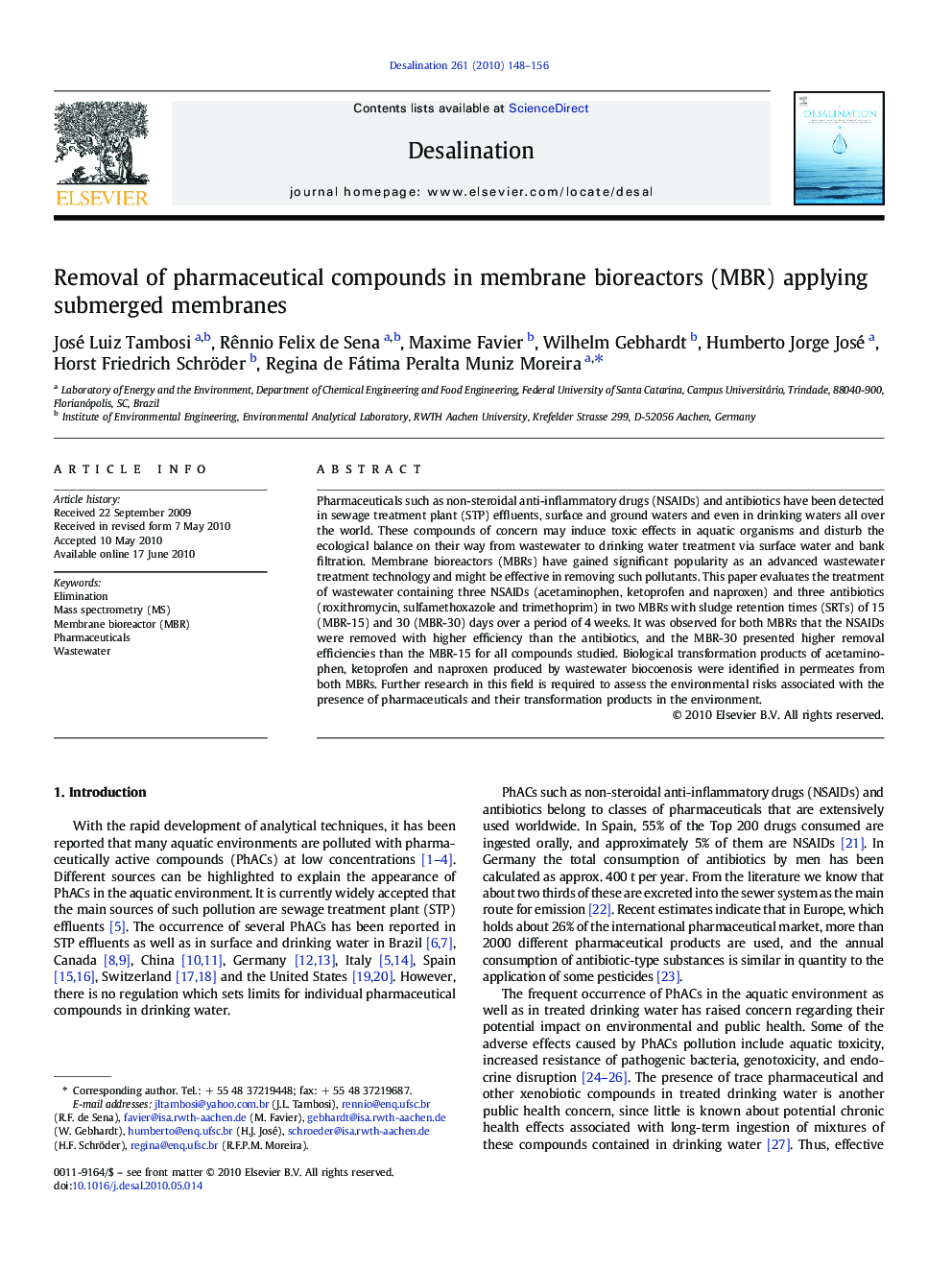| Article ID | Journal | Published Year | Pages | File Type |
|---|---|---|---|---|
| 625586 | Desalination | 2010 | 9 Pages |
Pharmaceuticals such as non-steroidal anti-inflammatory drugs (NSAIDs) and antibiotics have been detected in sewage treatment plant (STP) effluents, surface and ground waters and even in drinking waters all over the world. These compounds of concern may induce toxic effects in aquatic organisms and disturb the ecological balance on their way from wastewater to drinking water treatment via surface water and bank filtration. Membrane bioreactors (MBRs) have gained significant popularity as an advanced wastewater treatment technology and might be effective in removing such pollutants. This paper evaluates the treatment of wastewater containing three NSAIDs (acetaminophen, ketoprofen and naproxen) and three antibiotics (roxithromycin, sulfamethoxazole and trimethoprim) in two MBRs with sludge retention times (SRTs) of 15 (MBR-15) and 30 (MBR-30) days over a period of 4 weeks. It was observed for both MBRs that the NSAIDs were removed with higher efficiency than the antibiotics, and the MBR-30 presented higher removal efficiencies than the MBR-15 for all compounds studied. Biological transformation products of acetaminophen, ketoprofen and naproxen produced by wastewater biocoenosis were identified in permeates from both MBRs. Further research in this field is required to assess the environmental risks associated with the presence of pharmaceuticals and their transformation products in the environment.
